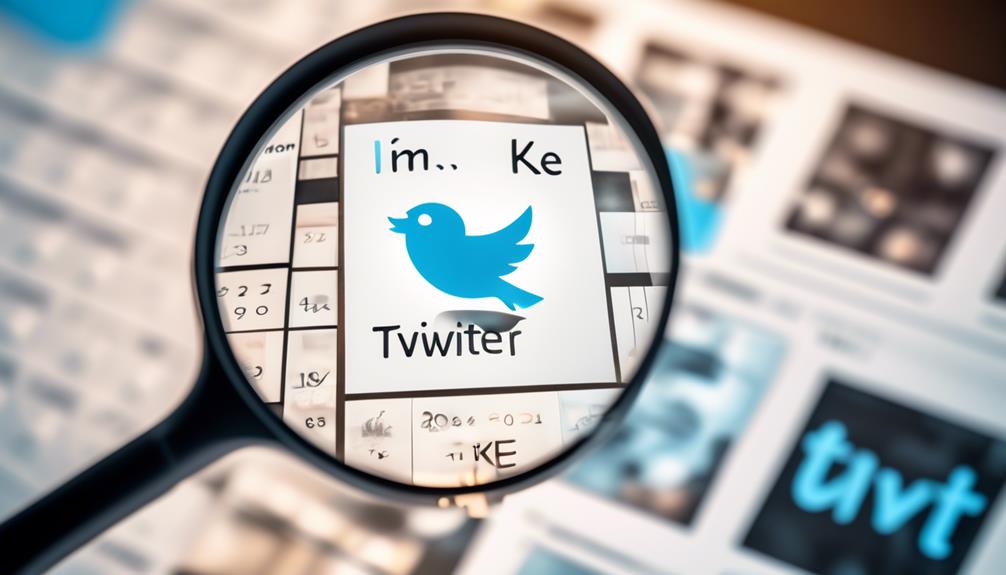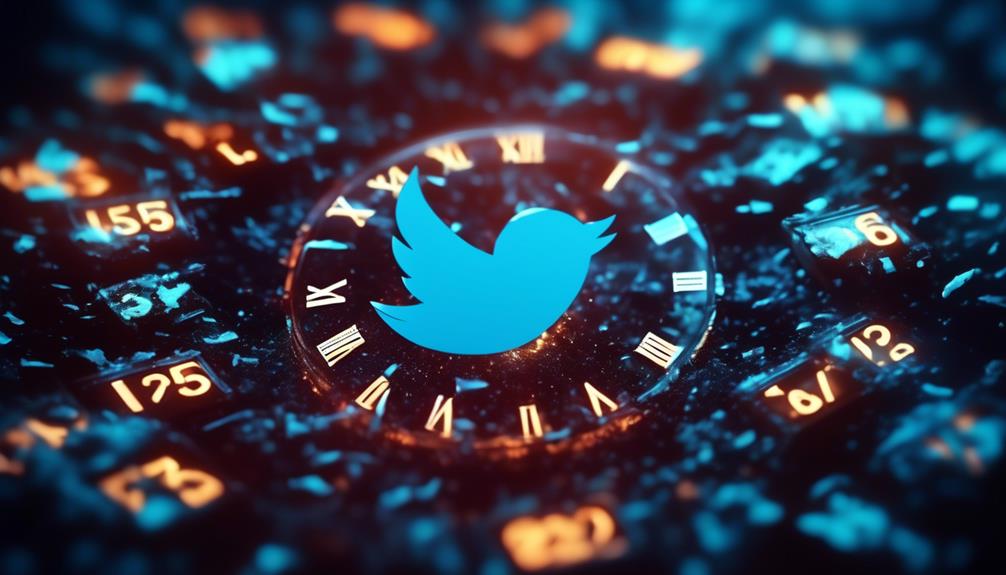
How long does Twitter keep likes?
You know that fleeting satisfaction you get when your tweet receives a ‘like’? Well, have you ever given a thought to how long Twitter actually retains these digital thumbs-ups? It’s more than just a trivial curiosity, it’s a question about data storage and privacy.
You might be surprised to discover that Twitter’s policy on preserving ‘likes’ is not as straightforward as you might think. This is an intriguing subject that’s worth exploring further, especially if you’re a regular user of the platform.
Key Takeaways
- Likes on Twitter have an infinite lifespan and do not expire over time.
- Deleting a tweet also deletes any associated likes, which can impact overall engagement metrics.
- Twitter may store data, including likes, for longer periods under certain circumstances.
- Likes on Twitter are used by algorithms to personalize ads and content, suggest relevant users, and promote trending content.
Understanding Twitter’s Data Policy

To fully grasp how long Twitter retains your likes, you need to delve into Twitter’s data policy, which outlines the platform’s practices and guidelines for data storage and management. The policy details how Twitter uses data encryption to safeguard your likes and other user data from unauthorized access. Data encryption is a cutting-edge technology that transforms your data into an encoded version, making it unreadable to hackers. It’s an innovative security measure that ensures your likes and other interactions are kept secure and confidential.
Additionally, user verification also plays a significant role in Twitter’s data policy. This process authenticates your identity when you log in to your account, adding an extra layer of security to protect your data. When you like a tweet, your action is attached to your verified profile, which enhances accountability and traceability.
Twitter’s data policy indicates that your likes are retained until you decide to unlike a tweet or delete your account. However, it’s worth noting that Twitter may store your data for longer periods under certain circumstances, such as when required by law or for ongoing investigations. This underlines Twitter’s commitment to data management that isn’t only innovative but also responsible and compliant with legal requirements.
How Twitter Defines ‘Likes
Understanding how Twitter defines ‘likes’ is crucial to getting the most out of your Twitter experience. As you navigate the social media platform, you’ll find that a ‘like’ is more than just a simple click; it’s a public acknowledgment of your interest in a particular tweet.
The lifespan of a ‘like’ can also impact the visibility and reach of your interactions on Twitter, which will be discussed further.
Understanding ‘Likes’ on Twitter
In the realm of Twitter, likes serve as a simple yet powerful tool, enabling you to express your appreciation for a content or support for a comment with a single click on the heart-shaped symbol.
This ‘Like’ symbolism is more than just an emoji; it’s an innovative way for you to interact with tweets. A ‘Like’ can boost a tweet’s popularity, signaling its relevance and quality to the Twitter algorithm, potentially propelling it into the limelight.
It also allows you to bookmark tweets for future reference. Understanding the power and implications of ‘Likes’ can help you make the most of your Twitter experience.
Likes’ Lifespan on Twitter
Now that you’ve grasped the significance of ‘Likes’ in the Twitter universe, let’s discuss their lifespan, or how long Twitter retains these digital affirmations.
The lifespan of ‘Likes’ on Twitter is infinite, unless the user who liked the tweet decides to unlike it or deletes their account.
Twitter’s algorithms play a crucial role in this process:
- They ensure ‘Likes’ don’t expire over time.
- They’re designed for ‘Like boosting’, promoting tweets with higher likes.
- They prioritize recent ‘Likes’ in a user’s feed.
- They use ‘Likes’ to suggest content to users based on their preferences.
The Lifespan of Twitter Likes

You might be wondering how long Twitter retains your likes, a topic that can greatly influence your engagement strategy on the platform. Like Notifications and Like Ranking form crucial aspects of this lifespan.
In essence, Twitter is designed to keep your likes indefinitely. As long as the tweet you liked isn’t deleted or the account isn’t deactivated, your likes remain visible.
This permanency plays a pivotal role in Like Ranking, a system that pushes popular tweets higher up in users’ feeds, based on the number of likes. The longer the likes remain, the higher the chance a tweet has to gain visibility, and by extension, engagement.
However, the Like Notifications are a different story. Although your likes are permanent, notifications about them aren’t. They tend to disappear after a few weeks to maintain an uncluttered user interface. Hence, if you’re using likes as a way to bookmark tweets, it’s advisable to use Twitter’s ‘Bookmark’ feature instead.
Understanding the lifespan of Twitter likes is key to maximizing your platform’s engagement and curating a more effective social media strategy. Always remember, your likes aren’t just expressions of approval, they’re influential markers within the Twitter ecosystem.
Twitter’s Data Retention Period
While likes may remain on Twitter indefinitely, it’s crucial to understand how long Twitter retains your data as a whole. With data encryption at its core, Twitter’s data retention policy is designed to maintain user engagement while ensuring privacy.
- Personal Data: Twitter keeps your personal data until your account is deleted. If you deactivate your account, it’s stored for 30 days before permanent deletion.
- Tweets: Your tweets remain on Twitter as long as your account is active or until you manually delete them.
- Direct Messages: Twitter retains direct messages for a period of up to 30 days after they’re deleted. However, they may still exist in other users’ inboxes.
- Log Data: Twitter retains log data, including IP addresses and system activity, for a maximum of 18 months.
It’s crucial to remember that Twitter uses data encryption to protect your information. This ensures that your data isn’t easily accessible, boosting user engagement by building trust. However, it’s always wise to be mindful of what you share online, as data retention policies can change.
Now that you understand Twitter’s data retention period, you can use the platform with a greater sense of control and security.
How to Access Your Twitter Likes

Navigating to your Twitter likes can offer a fascinating snapshot into your past interests and engagements on the platform. It’s a simple process, yet many users often overlook this treasure trove of information.
To access your likes, simply click on your profile picture on the top right corner of your Twitter homepage. From the drop-down menu, select ‘Profile and settings’. On the left-hand side of your profile page, you’ll see a tab labeled ‘Likes’. Clicking on this will reveal all the tweets you’ve ever liked.
This feature isn’t just for nostalgia, it’s also a key tool in analyzing your Tweet interactions. By studying your likes, you can discern patterns in your online behavior, helping you to create more engaging content in the future.
Moreover, you’ll notice that Twitter sends you ‘Like notifications’ whenever someone likes one of your tweets. These notifications serve as a real-time gauge of your tweet’s impact. By comparing these notifications with the tweets in your ‘Likes’ tab, you can gain valuable insights into what resonates with your followers and the broader Twitter community.
Twitter Likes Vs Retweets: the Difference
Just as understanding your likes can offer insights into your Twitter behavior, distinguishing between likes and retweets is equally critical in mastering the platform’s engagement dynamics.
You need to grasp two vital concepts: ‘Like visibility’ and ‘Like influence’.
Firstly, ‘Like visibility’ relates to how publicly your likes appear on Twitter. Your likes are visible under your profile and might also appear in others’ timelines. Conversely, Retweets are much more visible as they show up directly in your followers’ feeds.
Secondly, ‘Like influence’ is about the impact your likes have. While a ‘like’ signals approval, a ‘retweet’ goes a step further by endorsing and sharing the content with your followers.
To clearly distinguish, consider the following:
- Likes are private; Retweets are public.
- Likes show approval; Retweets indicate endorsement.
- Likes have limited visibility; Retweets have widespread reach.
- Likes have subtle influence; Retweets have significant impact.
The Impact of Deleting Tweets on Likes

When you delete a tweet, it’s important to understand that this action also eradicates any likes associated with that tweet, potentially impacting your overall engagement metrics. It’s a bit like playing a game of Jenga – you remove one block and the entire structure can become unstable. This is why it’s so crucial to think twice before deleting a tweet, especially if it has already garnered a significant amount of likes.
Unfortunately, there’s no such thing as ‘Tweet recovery’ once you’ve hit the delete button. Unlike email trash bins, Twitter doesn’t keep a repository of deleted tweets that you can restore at will. Your likes, retweets, and other engagement are gone for good.
In terms of ‘Like manipulation’, deleting tweets also wipes out any likes they’ve earned. It’s not a viable strategy for artificially inflating your like count by deleting less popular tweets.
| Action | Impact on Likes | Recovery Possible |
|---|---|---|
| Tweet Deletion | Eradicates likes | No |
| Like Manipulation | Not a viable strategy | No |
| Tweet Recovery | Not possible | No |
Protecting Your Privacy on Twitter
As you navigate the world of Twitter, understanding the platform’s privacy settings is crucial. It’s not just about how long likes are kept, but also how you can manage these likes to protect your privacy.
Let’s discuss these points in detail to help you maintain control over your online presence.
Understanding Twitter’s Privacy Settings
To safeguard your privacy on Twitter, you’ll need to get a solid grasp on the platform’s privacy settings. This includes understanding profile customization and how direct messaging works.
Here are four key settings you should focus on:
- Tweet Privacy: Decide who can see your tweets. You can protect them so only your followers can see them.
- Direct Messages: Control who can send you direct messages. This can be restricted to only people you follow.
- Discoverability: Choose whether others can find you via your email or phone number.
- Personalization and Data: Manage how Twitter uses your data. This includes customizing your profile and tailoring your Twitter experience.
Understanding these privacy settings leads to a safer, more personalized Twitter experience.
Managing Your Twitter Likes
Regularly managing your Twitter likes is a crucial step in maintaining your online privacy, as these likes can reveal personal preferences and interests to others. Paying attention to ‘Like notifications’ and understanding ‘Like trends’ will help you control your digital footprint.
| Action | How It Helps | Frequency |
|---|---|---|
| Reviewing likes | Identifies personal patterns | Weekly |
| Deleting likes | Cleans up your profile | Monthly |
| Disabling Like notifications | Reduces visibility of your activity | One-time |
| Analyzing Like trends | Helps understand your preferences | Quarterly |
| Using private account | Keeps your likes private | One-time |
Changing Your Twitter ‘Like’ Preferences

Adjusting your Twitter ‘Like’ preferences can significantly affect your user experience, providing a tailored feed that suits your interests and preferences. This process is a crucial part of profile personalization. You can optimize ‘Like’ notifications and other aspects of your Twitter experience by changing your ‘Like’ preferences.
Here’s a step-by-step guide on how to do it:
- Open your Twitter account and go to ‘Settings and Privacy’.
- Under the ‘Privacy and Safety’ tab, look for ‘Content You See’.
- Here, you can adjust what you ‘Like’ and who can see your ‘Likes’.
- Save your changes to apply your new ‘Like’ preferences.
This approach allows you to have more control over what appears in your feed, making your Twitter experience more personalized and enjoyable. It also enables you to manage your ‘Like’ notifications better, helping you focus on content that resonates with your preferences.
How Twitter Uses Your Like Data
You might be wondering how Twitter uses your ‘like’ data.
It’s a process that encompasses data collection, personalization, and raises certain privacy concerns.
Let’s examine these points and help you understand how to navigate the settings to maintain your privacy.
Twitter’s Like Data Collection
Incredibly, each time you hit that heart icon on Twitter, the platform is actively collecting and utilizing your like data to enhance your user experience. This isn’t just a simple data collection; it’s a sophisticated process governed by Twitter’s ‘Like’s algorithm’.
The purpose of this process is twofold:
- To personalize your feed: The more you like, the better Twitter understands what content you enjoy.
- For commercial exploitation: To tailor ads based on your preferences.
Additionally, your likes serve other functions:
- To suggest relevant users: The algorithm suggests users with similar likes.
- To promote trending content: Your likes contribute to what’s popular.
In essence, your likes are a crucial component of Twitter’s data strategy, shaping not only your individual experience but also global trends.
Data Usage for Personalization
Building upon the role your likes play in Twitter’s data strategy, let’s explore how the platform utilizes this information to personalize your experience. Your likes are used to tailor personalized advertisements and content, making your Twitter feed more relevant and engaging.
Twitter’s data transparency ensures you understand how your likes are used. Here’s a breakdown:
| Data Type | Usage | Effect |
|---|---|---|
| Your Likes | Personalize ads | Relevant advertisements |
| Your Tweets | Determine interests | Tailored content |
| Followed Accounts | Understand preferences | Personalized recommendations |
| Your Location | Localize ads | Geographically relevant ads |
| Time on Twitter | Gauge engagement | Optimized user experience |
Privacy Concerns and Settings
Ever wondered how Twitter uses your like data and what privacy concerns it might raise? Your likes are more than just a nod to a tweet you appreciate. They’re used for ad targeting, shaping your Twitter experience, and potentially leaving you vulnerable to privacy breaches.
- Ad Targeting: Twitter utilizes your likes to curate ads you may be interested in.
- User Experience: Your likes influence the content you see on your feed.
- Privacy Breaches: Though Twitter has measures in place, data misuse can lead to breaches.
- Privacy Settings: You have control over your data via Twitter’s privacy settings.
It’s essential to understand how your digital footprint is used, not just for innovation but for your online safety.
Twitter’s Policy Changes: Future Implications
Changes in Twitter’s policies can significantly impact how you interact with the platform, specifically regarding the longevity of likes and their overall visibility. The policy implications of these changes can be far-reaching and may require future adjustments on your end to maintain the visibility and impact of your tweets.
Twitter’s policy alterations often aim to enhance user experience, promote transparency, and address privacy concerns. However, these changes can also transform the ways in which likes are stored, displayed, and utilized. For example, future changes might limit the duration that likes remain visible or adjust the algorithm that determines which likes appear prominently in your followers’ feeds.
These potential modifications present both challenges and opportunities. On one hand, they could disrupt your established strategies for gaining visibility and engagement. On the other hand, they could also inspire innovative approaches to leverage the platform’s evolving features.
Staying informed about Twitter’s policy changes is crucial. Understanding the implications of these alterations can help you anticipate potential shifts, adapt your strategies accordingly, and continue to harness the platform’s potential in novel ways.

